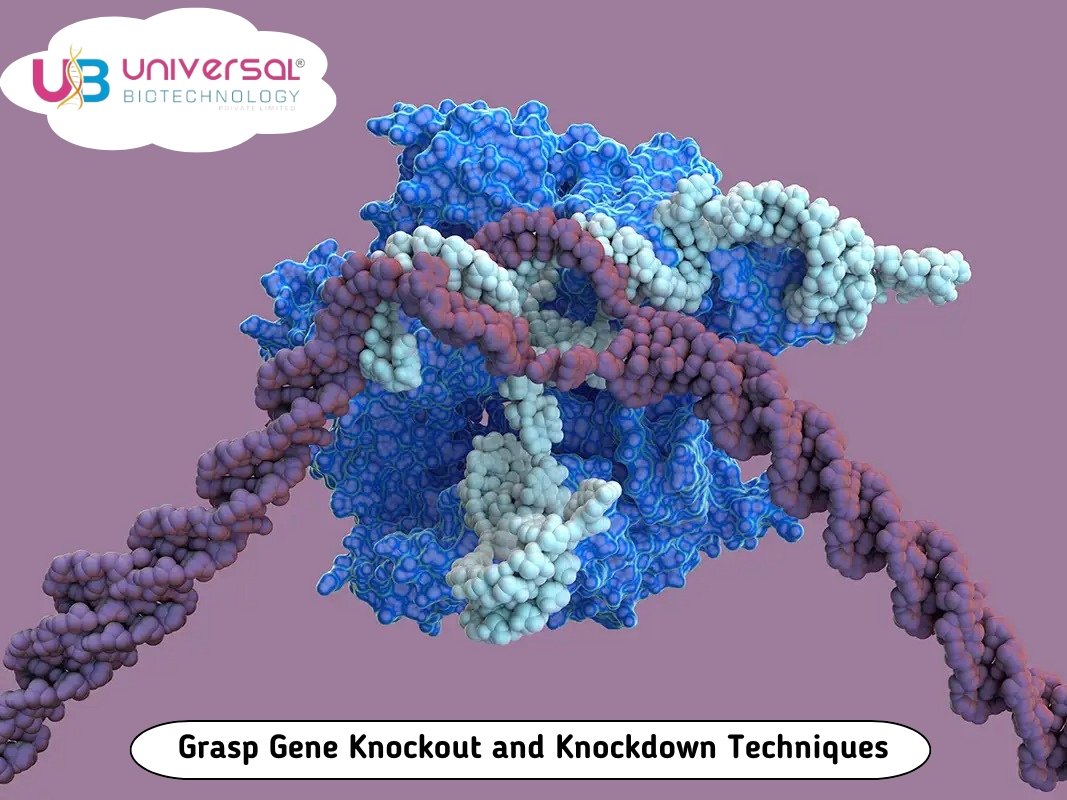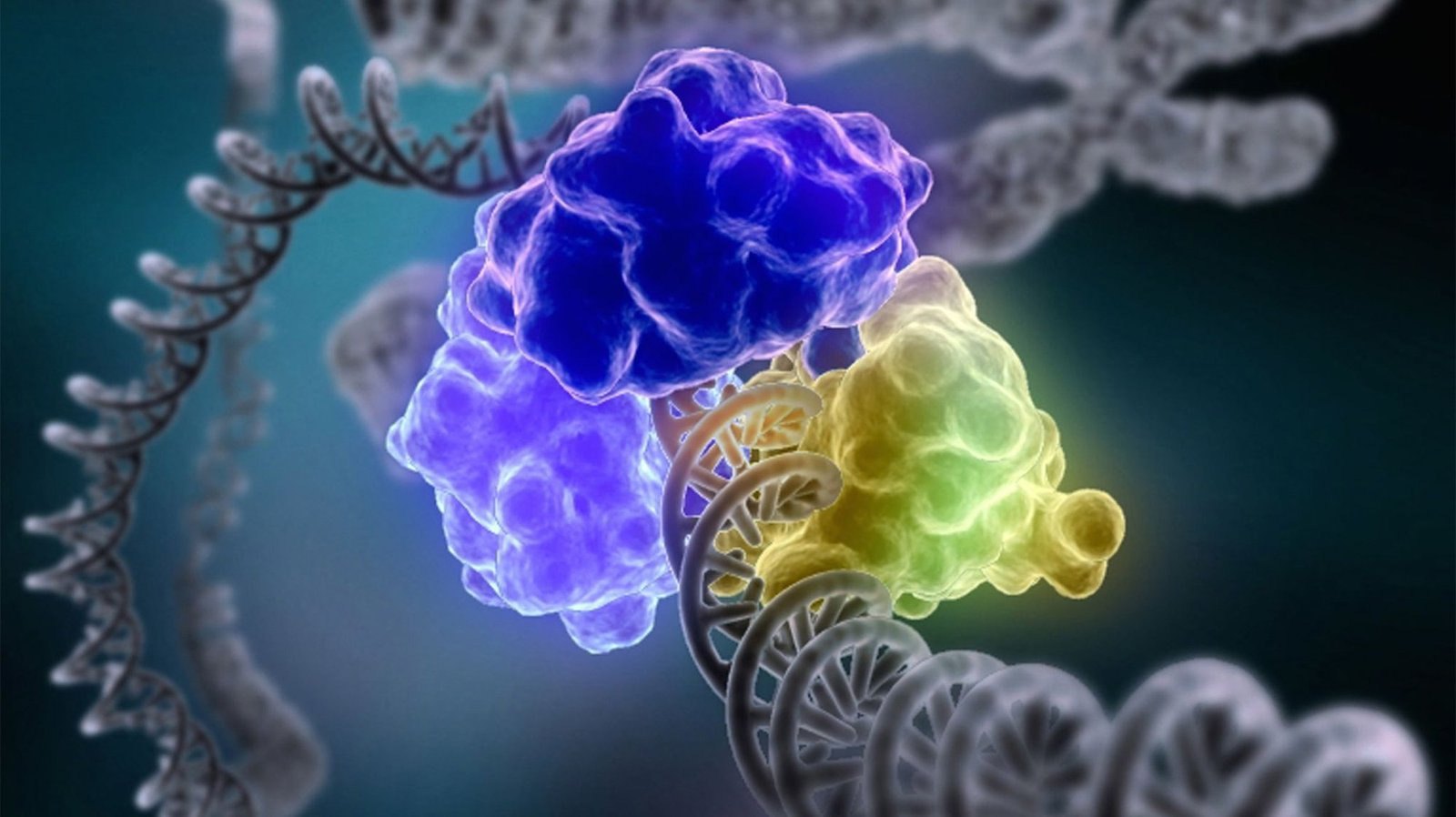
Gene
Knockout: Gene knockout is a technique used to
completely eliminate the expression of a specific gene from an organism's
genome. This is typically achieved by disrupting the gene's sequence, rendering
it non-functional. The most common approach involves the use of homologous
recombination to replace the target gene with a selectable marker, such as
antibiotic resistance, in embryonic stem cells. The modified stem cells are
then introduced into a developing organism, where they integrate into the
genome and give rise to individuals lacking the target gene.
Gene
Knockout application:
Understanding
gene function: Gene knockout allows researchers to
determine the role of a specific gene in the development, physiology, and
pathology of an organism.
Disease
modeling: Knockout animals, such as mice, are
valuable models for studying human diseases. By eliminating genes associated
with certain disorders, researchers can investigate the underlying mechanisms
and potential therapeutic strategies.
Gene
Knockdown: Gene knockdown is a technique used to
reduce the expression of a target gene, typically through the use of RNA
interference (RNAi) or antisense oligonucleotides. RNAi involves the
introduction of double-stranded RNA molecules that are complementary to the
target gene's mRNA. These molecules trigger the degradation of the mRNA,
thereby reducing protein synthesis and effectively silencing the gene.
Gene
Knockdown application:
Functional
genomics: Gene knockdown enables large-scale
screening of gene function by systematically inhibiting the expression of
individual genes and observing the resulting phenotypic changes.
Therapeutic
potential: RNAi-based therapies hold promise for
treating a wide range of diseases, including cancer, viral infections, and
genetic disorders, by selectively targeting disease-causing genes.
Comparison:
While both gene knockout and knockdown techniques aim to manipulate gene
expression, they differ in their mechanisms and outcomes. Knockout results in
the complete loss of gene function, whereas knockdown reduces gene expression
levels without completely eliminating it. Each approach has its advantages and
limitations, depending on the research question and experimental context.
Conclusion: Gene knockout and knockdown techniques are powerful tools for studying gene function and elucidating the molecular mechanisms underlying biological processes and diseases. By selectively manipulating gene expression, researchers can gain valuable insights into the complex interactions between genes and their physiological effects. Continued advancements in these techniques promise to further expand our understanding of genetics and drive innovations in medicine and biotechnology.

Knockout/Knockdown Validated
antibodies from our brand GeneTex
Antibodies
are crucial tools for both basic and clinical scrutiny. Though, there has been
extend suspicion of commercially available antibodies with regard to
performance and specificity changeability. As a result, the scrutiny community
and funding agencies have interrogated that antibody suppliers increase their
efforts to more thoroughly validations on the reagents. One perspective to
address this is through knockout or knockdown of the target protein by RNAi-mediated
or CRISPR technologies.
Technology
of CRISPR/Cas9:
The
RNA-guided Clustered regularly interspaced short palindromic repeats or CRISPR
associated nuclease 9 (CRISPR/Cas9) system is a comprehensive genome editing
tool obtained from the bacterial Type II CRISPR adaptive immune system. Its main
function in bacteria is the endonucleolytic destruction of invading plasmid or
phage DNA. In systems of eukaryotic, CRISPR/Cas9 is used for genome engineering
through peculiar targeting of DNA by a single guide RNA (sgRNA). A combination of the trans-activating crRNA
(tracrRNA) and CRISPR RNA (crRNA) mediated through pairing of base over the
~20-nt guide sequence. Cas9 perceives a very short preserved sequence (length of
few nucleotides) adjacent to the guide sequence called the protospacer adjacent
motif (PAM).
Once directed to the DNA target site, Cas9 lead to a double-strand break (DSB) that can be repaired either through the indel mutation-introducing non-homologous end-joining (NHEJ) or the high-fidelity homologous directed repair (HDR), resulting in gene knockout effects or template-dependent gene replacement. Our brand engages CRISPR/Cas9 technology to validate antibody specificity. In our brand prompt goal is to amalgamate CRISPR/Cas9 technology into our quality assurance process as the ‘knockout’ arm of our antibody specificity validation efforts. In an association effort with EdiGene company that lead to knockout or genome-edited cell lines using TALEN-mediated and CRISPR/Cas9 procedures. Our brand GeneTex will use lysates made from these cell lines for western blot assays to substantiate target specificity of our antibodies. We shall continue to provide the research community with the highest quality and most stringently validated antibodies assistance by these definitive KO data.
In support of this goal, GeneTex is conducting knockout/knockdown-based validation as a fundamental component of its antibody quality assurance process. To date, we have evaluated over thousands of our most popular products covering multiple research topics, such as apoptosis, metabolism, epithelial–mesenchymal transition, and neurodegenerative diseases. We will continue to expand these efforts in the future. Antibodies that have passed the KO/KD test will be labeled with the KO/KD validated icon.
The
validated broadly used antibodies bio-markers available from GeneTex for
multiple applications, reactivities and supported by references are beta Actin,
TSG101, ATM, HIF1, N-Cadherin, Mre11, Rad51, Nuclear Matrix Protein p84,
Vimentin, Caspase 3, IL6, NRF2, E-Cadherin, Estrogen Receptor beta, LC3B,
Rad50, c-Myc, alpha Smooth Muscle Actin, PARP, NFkB p65, Histone H3, SOX2,
PD-L1, Arginase 1, CD97, TET1, SDHA, GPX2, COX4, p63, Glutamine synthetase,
EIF6 and many more.
